The exhibition “Donne di colore” (Coloured women) opened on 22nd July at the Lambardi Tower, in Magione, in the province of Perugia. The artistic initiative, curated by the Rebirth/Third Paradise Ambassador Giorgio de Finis, has colour as common denominator of the works on display, and will run until 24th September. All the pieces exhibited are set in dialogue with Michelagelo Pistoletto’s Venus of the Rags, an icon of Arte Povera, which, like a manifest, brings together elements of a different nature: the defined and the confused, the abstract and the concrete, the shaped and the shapeless, the white and the multicoloured. The work by the artist from Biella will characterize and enhance the exhibition.

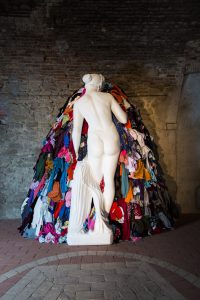
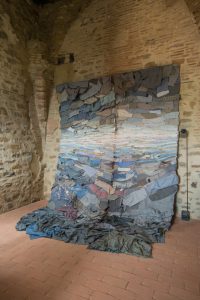
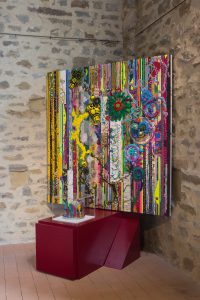
(from the left: Lambardi Tower; Pistoletto, “Venus of the Rags”; Kaikkonen, “Emptiness”; Montanino, “Grande Rigoroso”
Besides Pistoletto’s installation, you’ll find works by women artists of different generations and nationalities: Francesca Fini, Lenia Georgiou, Maya Hayuk, Kaarina Kaikkonen, Micaela Lattanzio, Florencia Martinez, Veronica Montanino, Francesca Pasquali, Gloria Petyarre, Virginia Ryan, Joana Vasconcelos and Mary Zygouri.

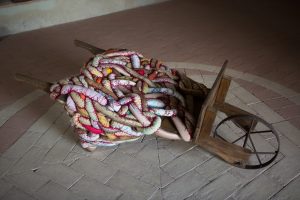
(First image: Ryan, “Float/2”; second image: Marinez, “Carritos: la leggerezza”)
Giorgio de Finis explained how the most famous philosophers and poets have linked chromatic hues to the fair sex: “In our culture, the prejudice connecting colour to the feminine – like the decorative, the excessive, the visual seduction to the popular and exotic – has ancient origins. Plato, in his battle against the sensitive world, condemned colour, in his opinion as equally false, dishonest and deceiving as the feminine sex. Another example is Baudelaire, who associated women, savages and children for “their naive attraction to sparkling things, multicoloured plumages, iridescent fabrics, the superlative majesty of artificial forms, and their disgust for what is real”. Charles Blanc’s thought is also meaningful; he claimed: “We recognize the power of colour, and the fact that its role is to tell us what agitates the heart, while the drawing shows what goes through one’s mind”. In this instance, the colour is accused of confusing, disorienting, preventing ideas from becoming clear and distinct.”
This exhibition will therefore be a response and a message not only to contemporaneity, but also to the thinkers of the past.
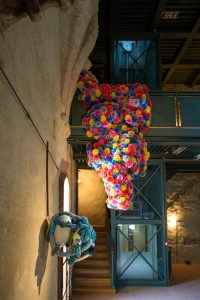

(First image: Pasquali, “Spiderballs”; second image: Vasconcelos, “Theodore”)
Photo credit: Giovanni de Angelis
Cover image: Zygouri, “Venus of the Rags”

